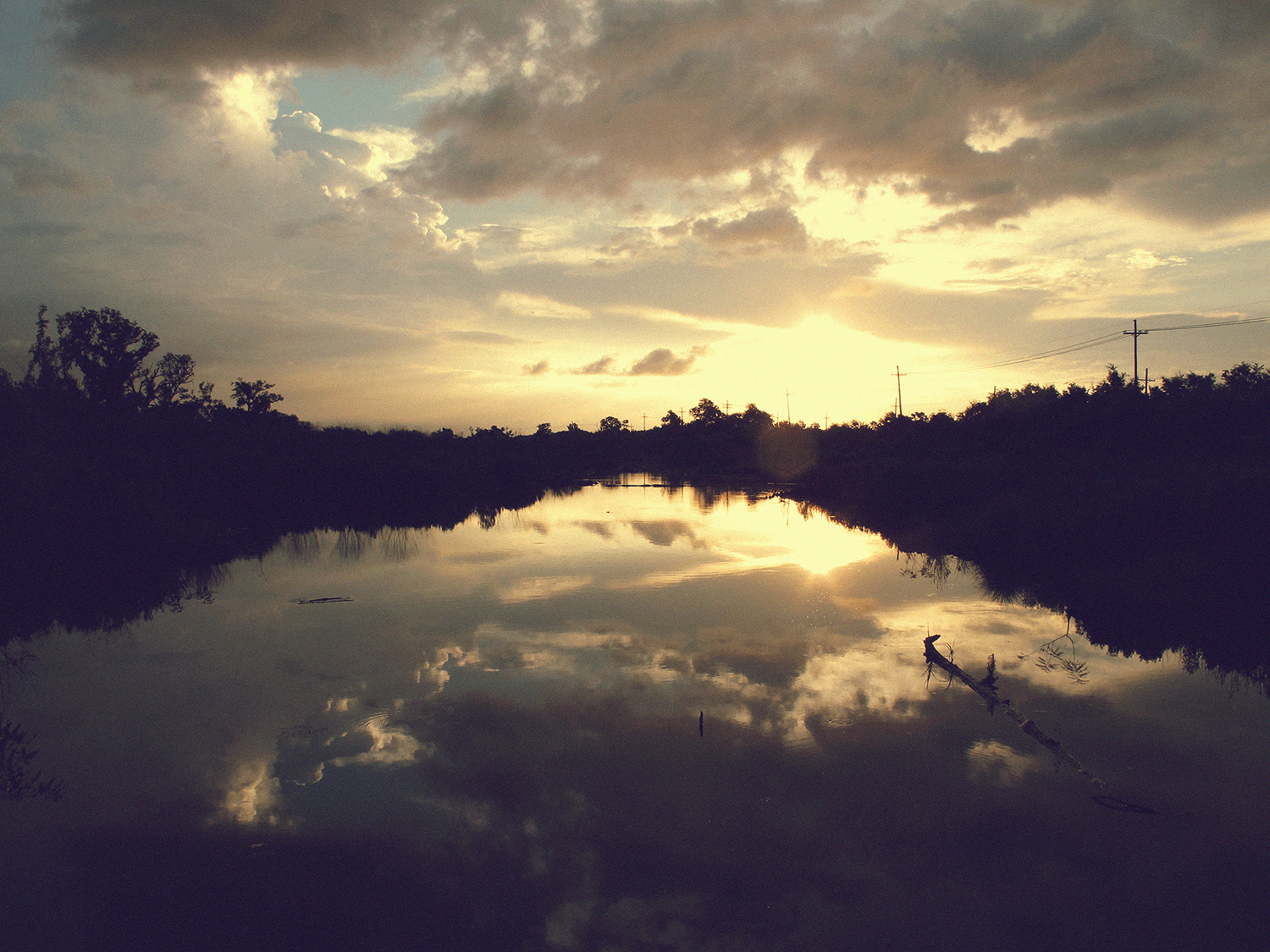CHANGING COURSE
Reconstructing the Mississippi delta as protective infrastructure
with Arcadis, Waggonner & Ball
with Arcadis, Waggonner & Ball
Changing Course proposes a regional reconfiguration of water control infrastructure along the Mississippi River below English Turn, just south of New Orleans, to rebuild the fraying delta by harnessing the river's greatest talent: land building. The immense watershed of the Mississippi delivers the eroded landscapes of the eastern Rockies, the Great Plains, and the Midwest to the vast swathes of marshland along the furry edge of the Gulf. Historically, the river built up land by depositing this sediment through seasonal flooding. Over time, as the river changed course, it built the delta up year by year, flood by flood.
Today fixed control insfrastructure contains the river within a single, permanent channel. While this protects communities from devastating floods, it also creates dependable nwaterways for the nation's largest continuous port system, stretching from La Balize to Baton Rouge. Through this rigid chute, the rich sediments that build up land through flooding are ultimately lost, spilled deep into the Gulf of Mexico. Maintaining the status quo has an unambiguous cost: erasure. Without a drastic rethinking of water infrastructure the sea will overrun and wash away south Louisiana. With a combination of porous infrastructure and traditional typology, Changing Course proposes an approach for rebuilding deltaic marshes and capturing sediment while protecting communities and industrial activities upon which the region depends.

"The Mississippi River, with its sand and silt, has created most of Louisiana, and it could not have done so by remaining in one channel...but in the interval since the last shift Europeans had settled beside the river, a nation had developed, and the nation could not afford nature."
(John McPhee, Atchafalaya)
(John McPhee, Atchafalaya)
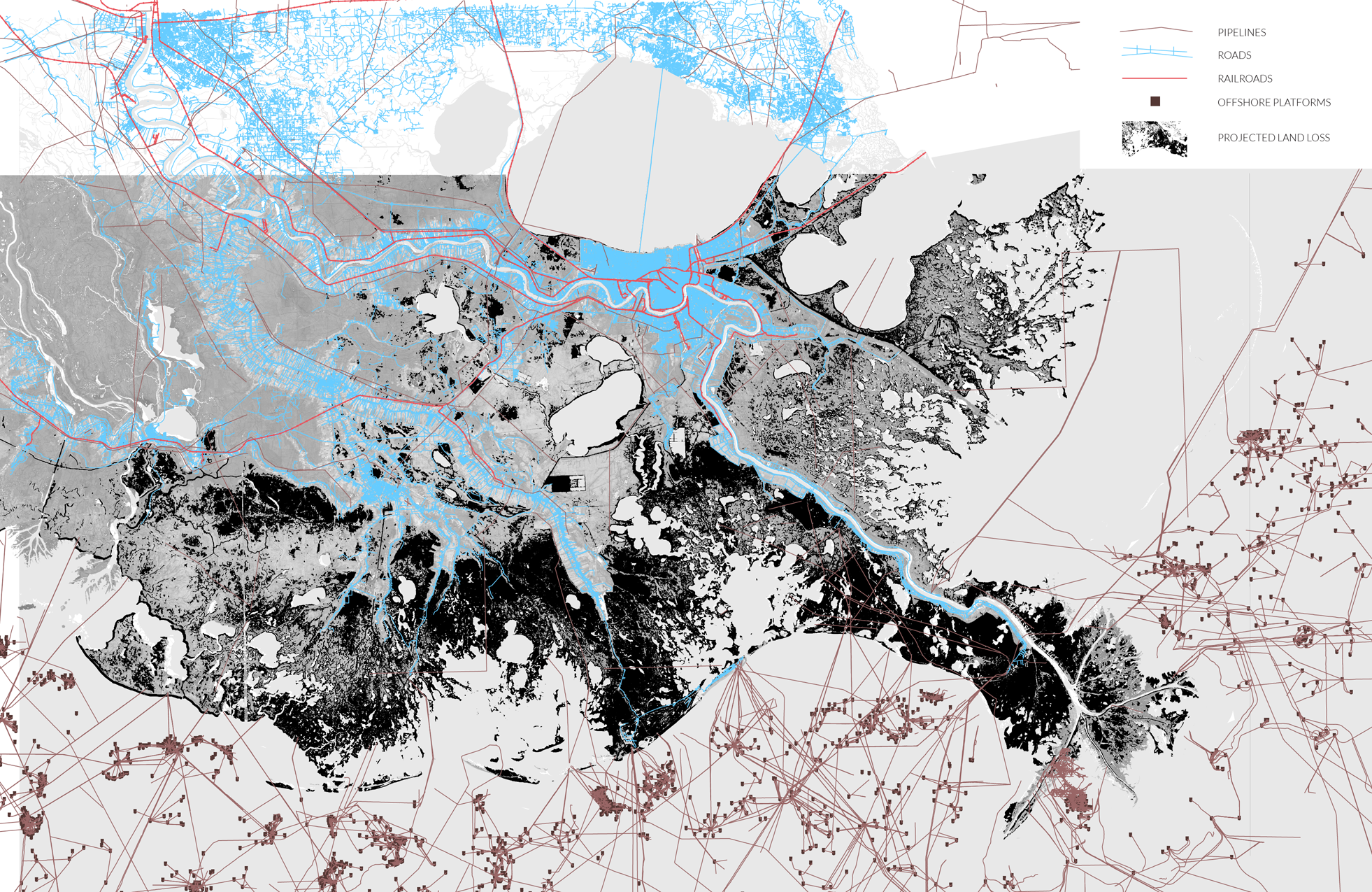
Project objectives
The project proposed short and long-term strategies of hydrological engineering and environmental design that addresses six primary objectives for delta restoration.
The project proposed short and long-term strategies of hydrological engineering and environmental design that addresses six primary objectives for delta restoration.
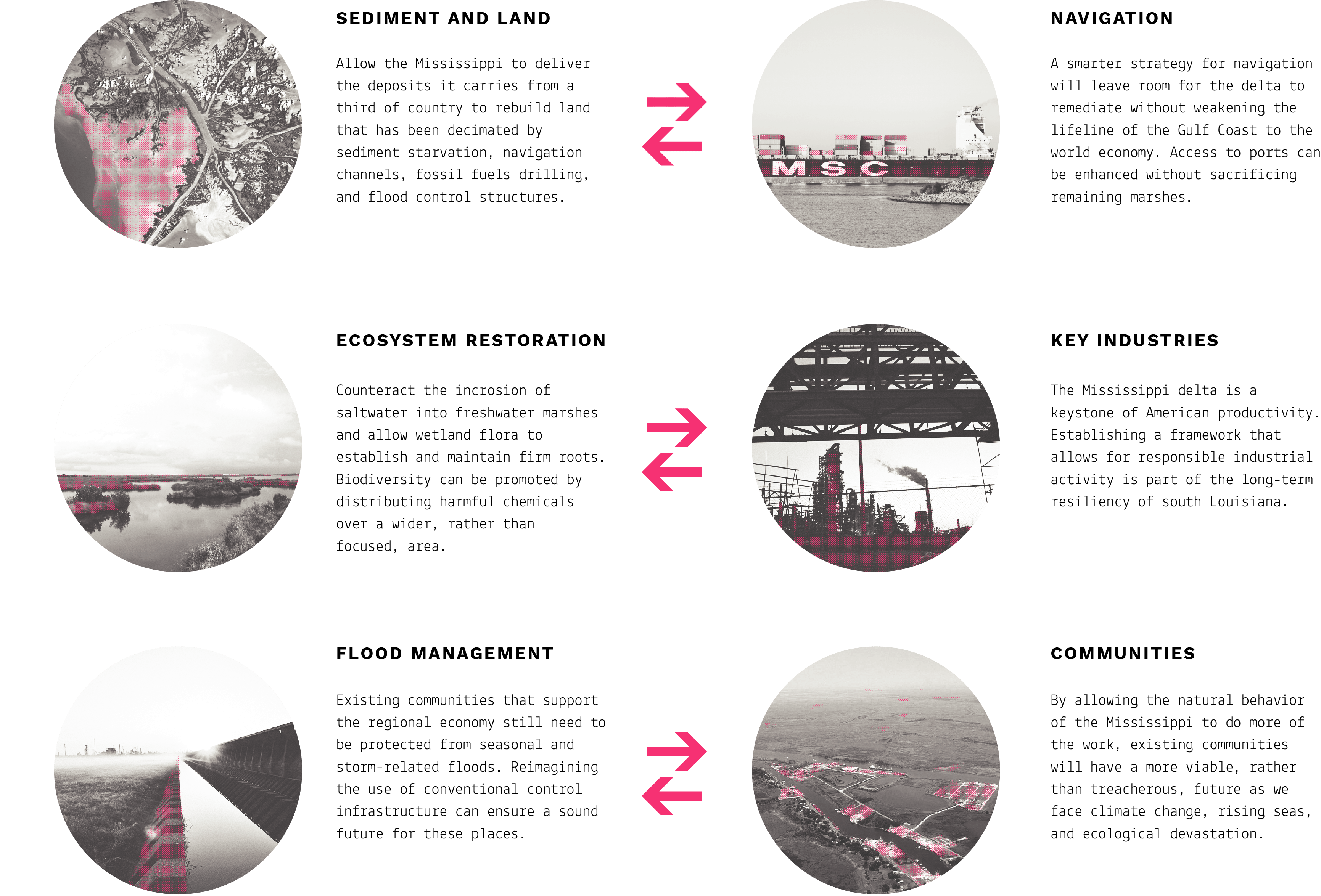
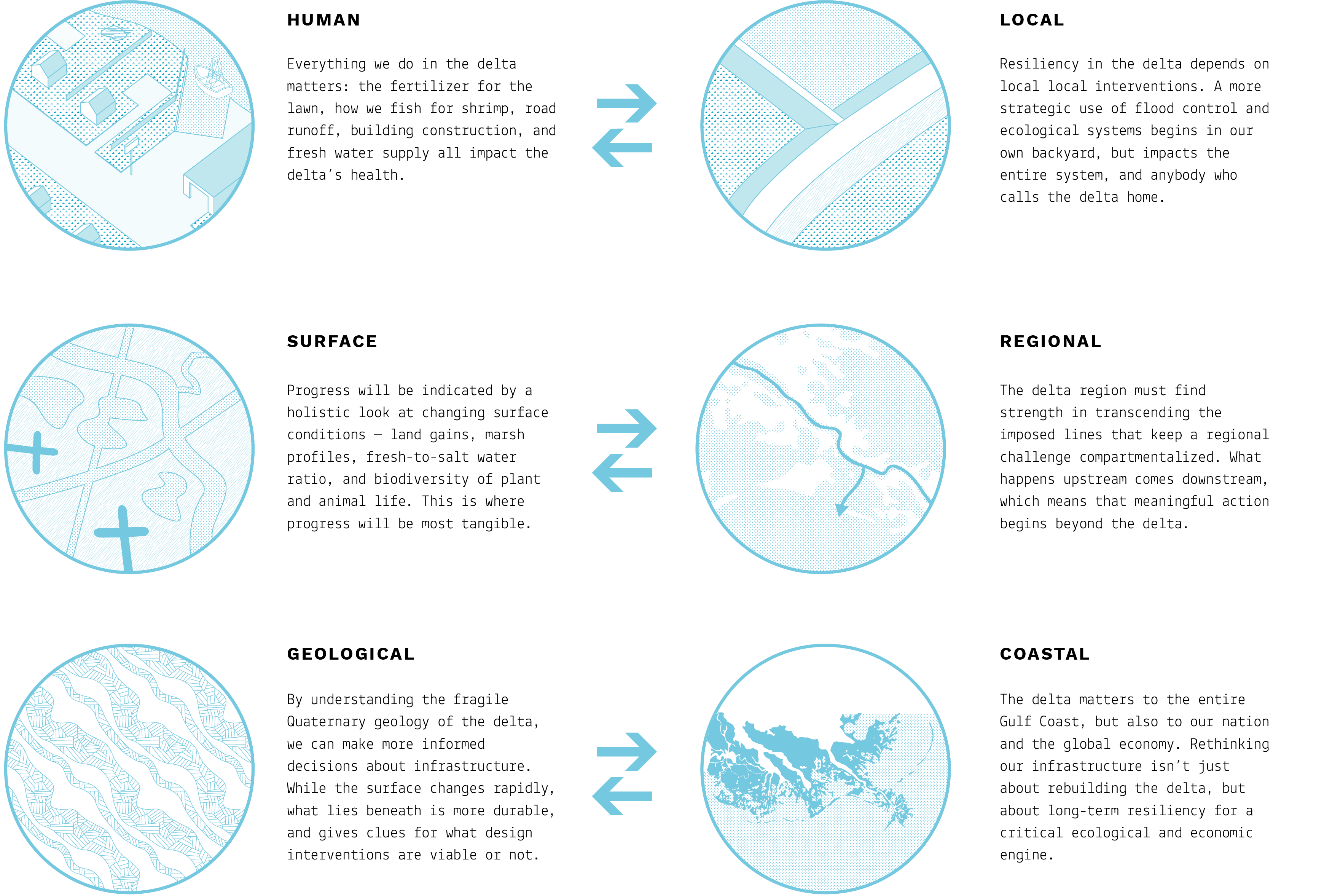
Scales of intervention
A systemic approach for the delta isn't focused on any one problem or solution, and demands an understanding of the natural and built environment at multiple scales.
A systemic approach for the delta isn't focused on any one problem or solution, and demands an understanding of the natural and built environment at multiple scales.
Deltaic system
A holistic solution demands radical environmental action, but also a new ideology about the human environment as something that works with nature, not against it.
A holistic solution demands radical environmental action, but also a new ideology about the human environment as something that works with nature, not against it.
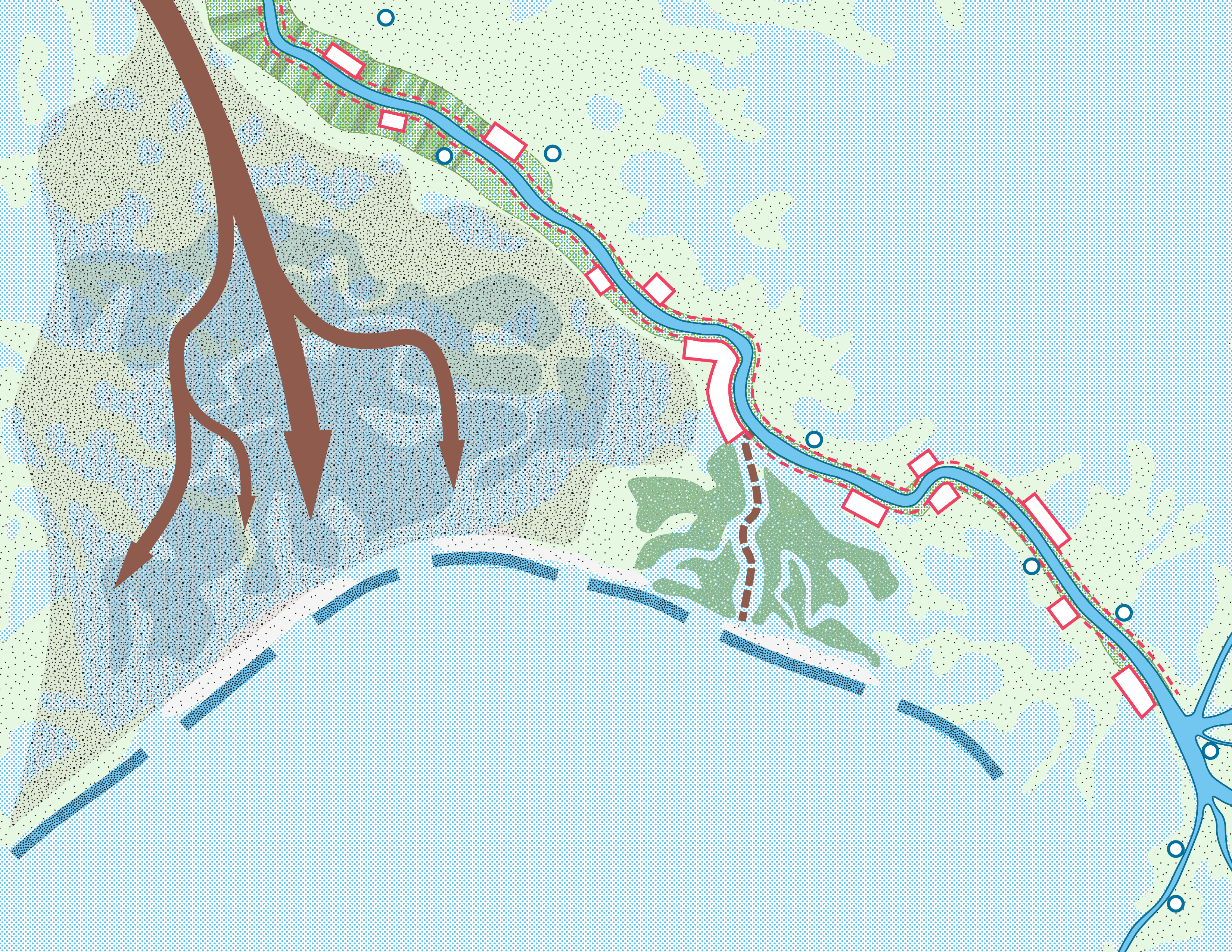
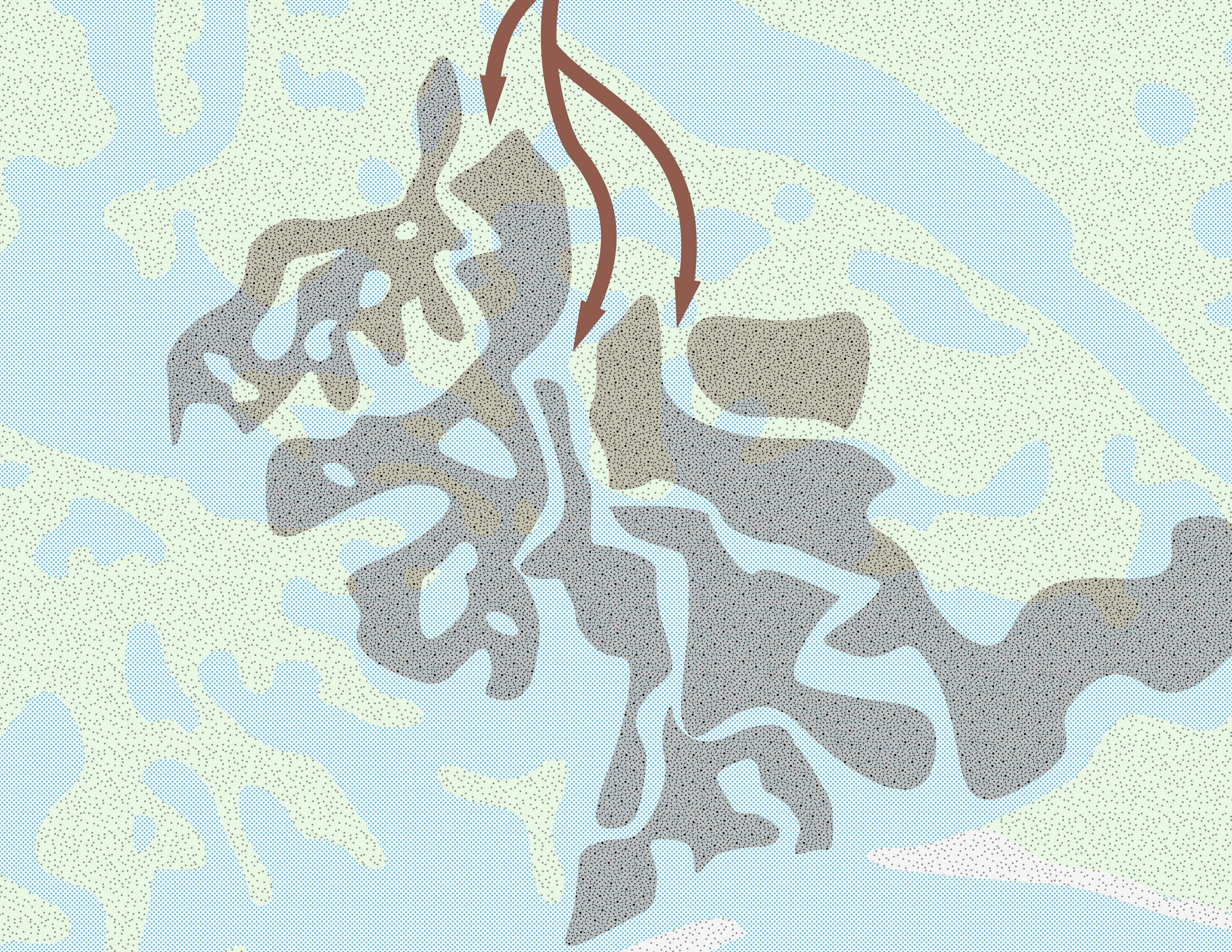
Sediment
We have a simple need: to capture the sediment the Mississippi carries to Louisiana rather than losing it to the sea.
Sediment diversions siphon material as it gathers in the river channel and distributes it through pipes and secondary channels to marsh-depleted areas. It is a rough but fast simulation of what the river would do naturally as result of flooding. Sediment is future land, and installing diversions along the channel south of English Turn is a first step towards physically reconstructing stable land.
We have a simple need: to capture the sediment the Mississippi carries to Louisiana rather than losing it to the sea.
Sediment diversions siphon material as it gathers in the river channel and distributes it through pipes and secondary channels to marsh-depleted areas. It is a rough but fast simulation of what the river would do naturally as result of flooding. Sediment is future land, and installing diversions along the channel south of English Turn is a first step towards physically reconstructing stable land.
Ecosystems
New ground means there's a place for plants to take root and, consequently, for resilient ecosystems to recover. If healthy, these ecosystems strengthen the capacity for the marsh to act as a barrier against destructive storm surges by providing a range of plant species suitable to different conditions, such as water salinity and soil density. Without this diversity of healthy ecosystems, the marsh will be vulnerable to powerful climate events like hurricanes.
New ground means there's a place for plants to take root and, consequently, for resilient ecosystems to recover. If healthy, these ecosystems strengthen the capacity for the marsh to act as a barrier against destructive storm surges by providing a range of plant species suitable to different conditions, such as water salinity and soil density. Without this diversity of healthy ecosystems, the marsh will be vulnerable to powerful climate events like hurricanes.

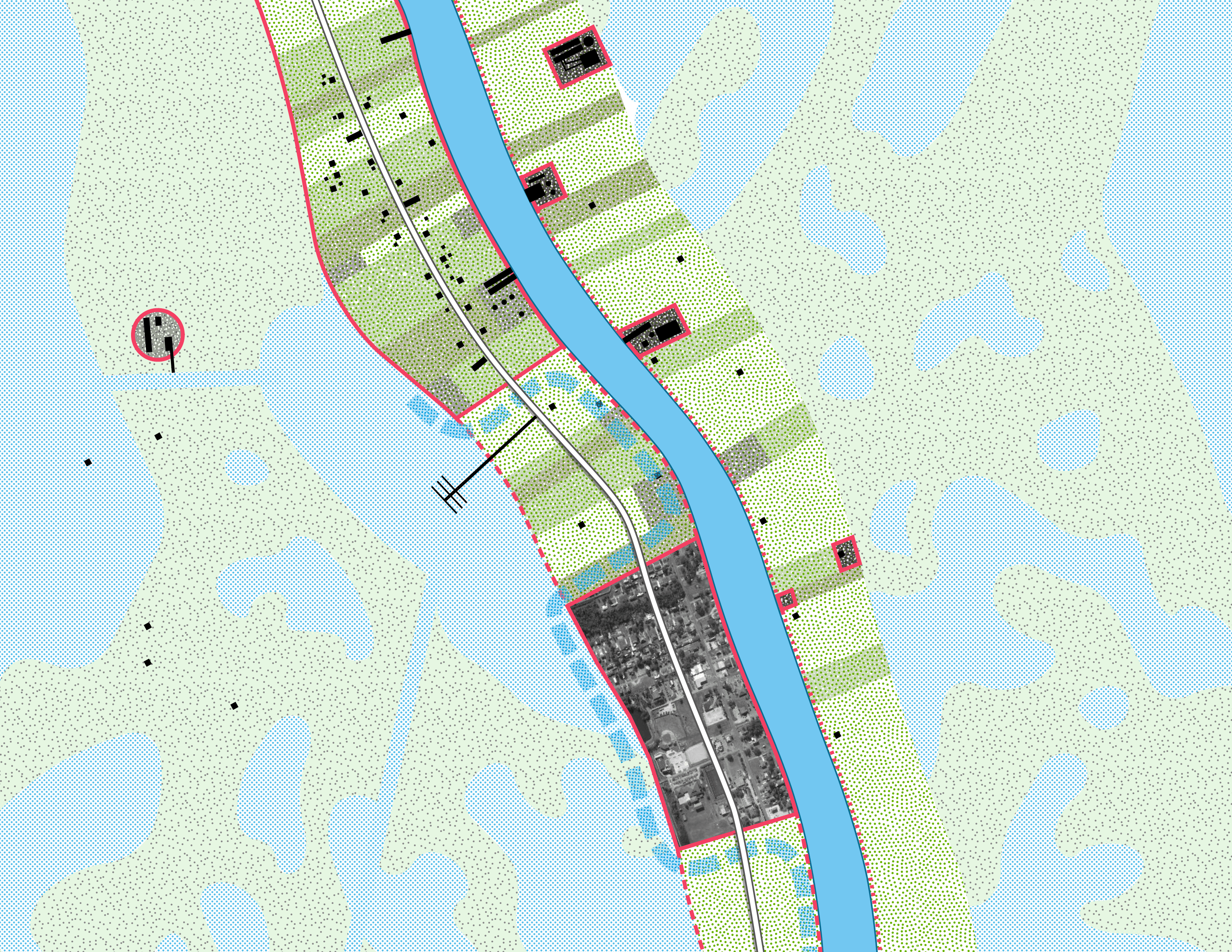
Community & Industry
Without systemically rethinking river controls, communities have limited hope to remain viable, let alone grounded and dry. At this point, communities need a healthy delta to keep living. Perversely, without the value attached to the existence and heritage of communities througout the delta, complacency and ambivalence might pose a greater threat instead.
There are good reasons to design environmental systems that allow communities and industrial sites to coexist with this fragile landscape, and mitigate — and in many cases, reverse - the threat that industry has posed to the delta in previous decades.
Without systemically rethinking river controls, communities have limited hope to remain viable, let alone grounded and dry. At this point, communities need a healthy delta to keep living. Perversely, without the value attached to the existence and heritage of communities througout the delta, complacency and ambivalence might pose a greater threat instead.
There are good reasons to design environmental systems that allow communities and industrial sites to coexist with this fragile landscape, and mitigate — and in many cases, reverse - the threat that industry has posed to the delta in previous decades.
Flooding
That means making a compromise between where we build and where we don't, and designing new forms of infrastructure that allow the river to behave as it would without human intervention. Porous flood barriers would selectively allow seasonal flooding to occur while mostly containing the existing channel. Between enclosed protected areas, designated flood zones would expose the surrounding marsh to the full force of the river in order to distribute sediment without pipeline diversions.
That means making a compromise between where we build and where we don't, and designing new forms of infrastructure that allow the river to behave as it would without human intervention. Porous flood barriers would selectively allow seasonal flooding to occur while mostly containing the existing channel. Between enclosed protected areas, designated flood zones would expose the surrounding marsh to the full force of the river in order to distribute sediment without pipeline diversions.

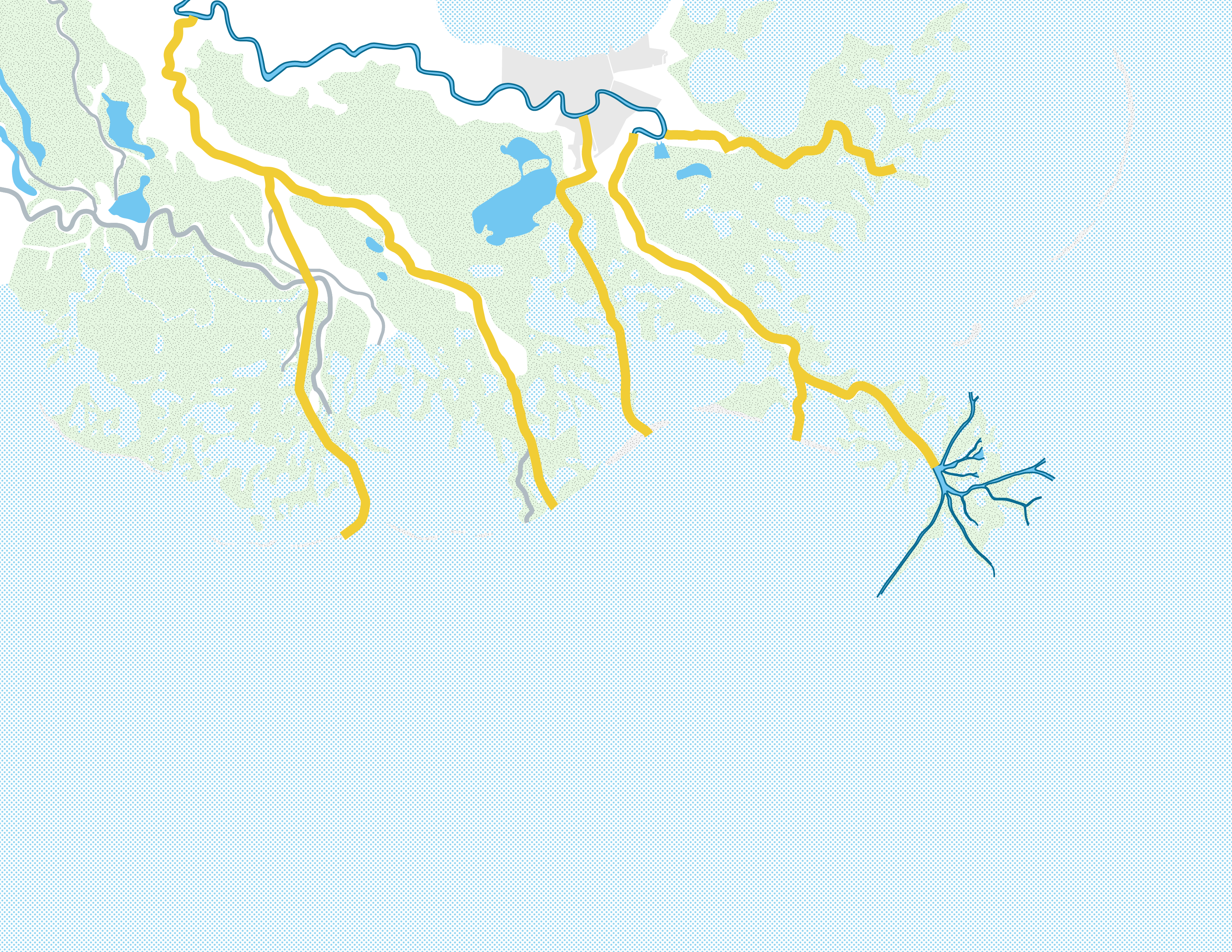
Navigation
The Mississippi River between La Balize and Baton Rouge is home to one of the largest combined port system in the world. Because existing industries will be no longer viable without drastic action to reconstruct lost marsh, commercial activity and the delta are mutually bound. Just as upstream activity affects the delta, what we do here reverberates upstream. Taken together, these strategies protect the navigation routes that the coastal economy depends on. That's true for the independent shrimp boat as much as it is for a world-cruising container ship.
The Mississippi River between La Balize and Baton Rouge is home to one of the largest combined port system in the world. Because existing industries will be no longer viable without drastic action to reconstruct lost marsh, commercial activity and the delta are mutually bound. Just as upstream activity affects the delta, what we do here reverberates upstream. Taken together, these strategies protect the navigation routes that the coastal economy depends on. That's true for the independent shrimp boat as much as it is for a world-cruising container ship.
